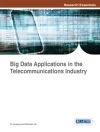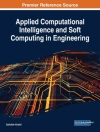LASER INTER-SATELLITE LINKS TECHNOLOGY
State of the art resource covering key technologies and related theories of inter-satellite links
Laser Inter-Satellite Links Technology explores satellite networking as a growing topic in the field of communication technology, introducing the definition, types, and working frequency bands of inter-satellite links, discussing the number of orbital elements of the spacecraft motion state under two-body motion and their conversion relationship, and establishing the basic demand model for inter-satellite link network, chain topology model, and transmission protocol model.
The book focuses on the analysis and introduction of the principles and error sources of microwave and laser inter-satellite ranging, including the basic composition, workflow, and constraints of the laser inter-satellite link, and related design principles of the inter-satellite laser transmitter and receivers. Later chapters also discuss theories and methods of acquisition, alignment, and tracking, the impact of alignment errors on performance, and inter-satellite link modulation and its implementation.
Specific sample topics covered in Laser Inter-Satellite Links Technology include:
* Pulse position modulation (PPM), differential pulse position modulation (DPPM), digital pulse interval modulation (DPIM), and double-head pulse interval modulation (DH-PIM)
* Basic demand model of inter-satellite link network application, including basic configuration of constellations and inter-satellite transmission networks
* Inter-satellite ranging accuracy, principles of microwave inter-satellite ranging, and analysis of microwave ranging error sources
* Effect of tracking error on the beam distribution at the receiving end and influence of tracking and pointing error on communication error rate
Laser Inter-Satellite Links Technology serves a completely comprehensive resource on the subject and is a must-have reference for experts and scholars in aerospace, along with graduates and senior undergraduates in related programs of study.
Despre autor
Jianjun Zhang, Ph D, is a Professor at Beijing Institute of Spacecraft System Engineering, China Academy of Space Technology. He has published more than 50 SCI/EI search papers in international journals and conferences, authorized more than 20 invention patents at home and abroad, and published 3 monographs.
Jing Li, Ph D, is an Associate Professor at the School of Automation, Beijing Institute of Technology. She has presided over more than 10 projects at leading institutions.












